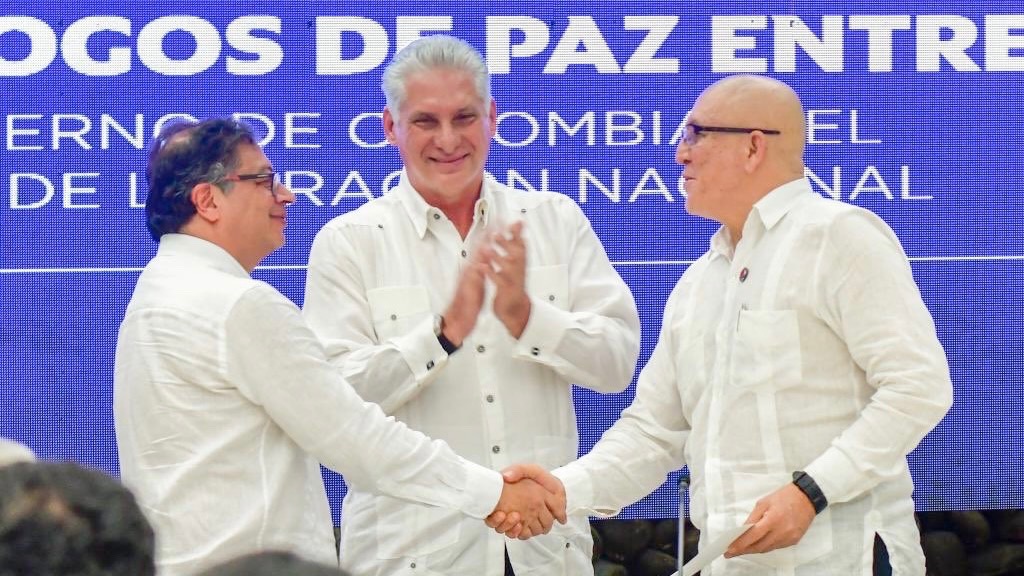The Colombian military forces and the guerrilla group National Liberation Army (ELN) have halted offensive actions against each other as of July 6. This comes ahead of the beginning of a full bilateral ceasefire next month. The step was agreed to on June 9 during the third round of peace negotiations between the two sides in Havana, Cuba.
The Central Command of the ELN issued a statement on July 4 announcing that it had ordered its members to cease all offensive military actions and intelligence efforts against the military and police forces throughout the national territory. The group added that it would continue to respond to attacks on and threats to its units from any armed group or entity.
The following day, on July 5, President Gustavo Petro signed a decree that ordered the suspension of offensive military and police operations against the ELN. The decree clarified that the suspension of operations does not imply that the public force ceases to ensure the preservation of “the integrity of citizens” throughout the national territory or to guarantee the constitutional order and the necessary conditions for the exercise of rights.
This cessation will remain in force between July 6 and August 3. On August 3, the 180-day bilateral truce that was agreed upon will come into force and will remain in effect until January 29, 2024.
The agreement on ceasefire between the government and the ELN is the most concrete step to emerge from the peace talks which resumed in November 2022. It is also a crucial part of the goal of the Petro government to bring “total peace” to the country, which has been plagued by violence from over 60 years of internal armed conflict.
The ELN is Colombia’s largest active guerrilla group. It has around 2,400 combatants, present in 22 out of the 32 departments. The cessation of offensive operations with the group marks the beginning of a new chapter in the history of the country.
The decree, signed by President Petro, stated that the ceasefire may be extended after the reports by the monitoring and verification mechanisms are assessed at future peace dialogue tables, and in accordance with what the parties agree.





